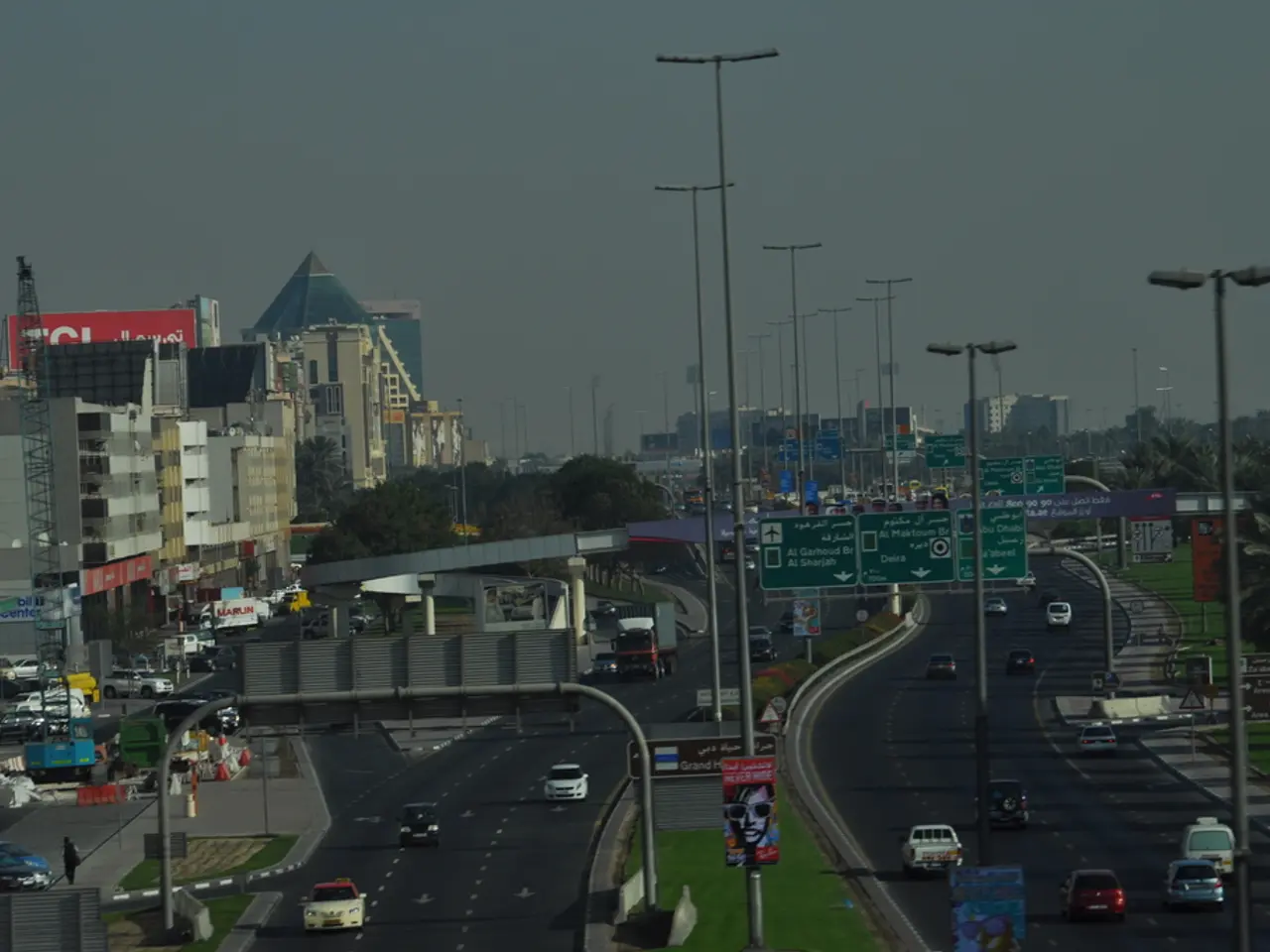Surveillance cameras in Almaty expose multiple infractions
In the heart of Kazakhstan, the city of Almaty has seen a significant boost in public safety, thanks to its extensive network of surveillance cameras. These cameras are a key component of the city's Smart City technologies, which also include real-time transport tracking and public service digitization [1][4].
The city's video surveillance system is so well-developed that Andrei Kvashnin, head of the city's Operational Management Center, recently stated that it is very advanced [2]. The system includes over 120,000 cameras, with approximately 100 posts equipped with around 700 cameras for road safety [3]. Additionally, the 'Sergek' system, another automated information system for road safety, boasts around 2,000 cameras [3].
These cameras are not just passive observers. They are designed to react to traffic violations and immediately alert center staff [1]. Moreover, they can detect unusual events, left-behind items, group movements, and perimeter breaches [4]. The cameras have proven particularly effective in reducing pickpocketing incidents on buses by almost half [5].
Last year, over 1 million traffic violations were detected and addressed in Almaty, and around 85 criminal groups were exposed with the help of these devices [6]. In total, over 6,000 crimes were solved last year due to camera surveillance [4][5].
While the deployment of these cameras has undoubtedly improved monitoring and potentially solved crimes and traffic violations, specific quantitative data or case studies demonstrating their effectiveness in this regard are not widely available. The reports mainly highlight the general improvement in safety and efficiency due to Smart City initiatives, rather than concrete crime-solving statistics.
It's important to note that while technological advancements are crucial, systemic challenges remain in policing and public trust in Kazakhstan, which may indirectly affect crime resolution processes [2]. This suggests that while surveillance technology aids public safety and monitoring, its ultimate effectiveness in solving crimes may also rely on broader law enforcement capacities and public cooperation.
In summary, the presence and increased deployment of surveillance cameras in Almaty demonstrate positive impacts on monitoring and safety but lack specific public data on their direct effectiveness in solving crimes and traffic violations. Despite this, the cameras have played a significant role in enhancing public safety within the Smart City framework.
The city's advanced surveillance cameras, a part of the Smart City technologies, not only monitor public areas but also actively react to traffic violations and unusual events, contributing to a significant reduction in pickpocketing incidents on buses. In the realm of general-news, over 1 million traffic violations were addressed and around 85 criminal groups were exposed last year due to these cameras, while approximately 6,000 crimes were solved through camera surveillance. However, it's crucial to recognize that while technology can aid in public safety, systemic challenges in policing and public trust in Kazakhstan may indirectly affect crime resolution processes, suggesting that technology's effectiveness in solving crimes may also rely on broader law enforcement capacities and public cooperation, aligning it with the crime-and-justice domain.




